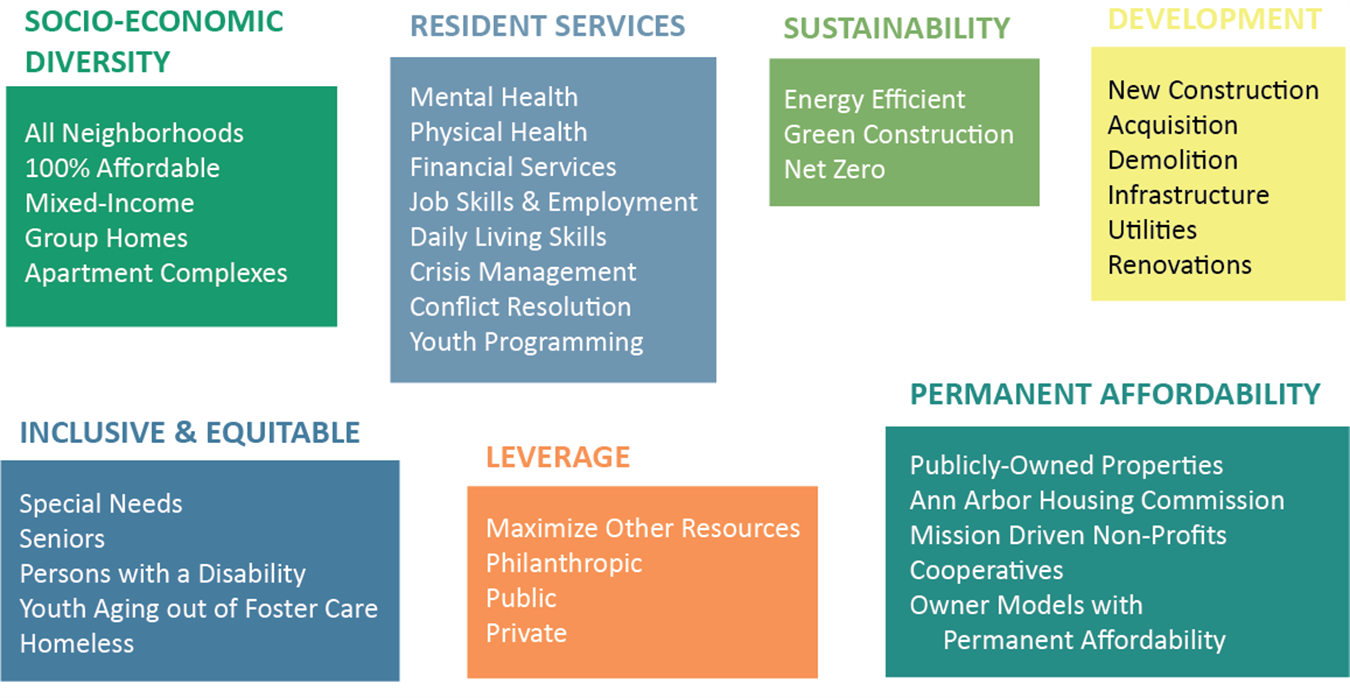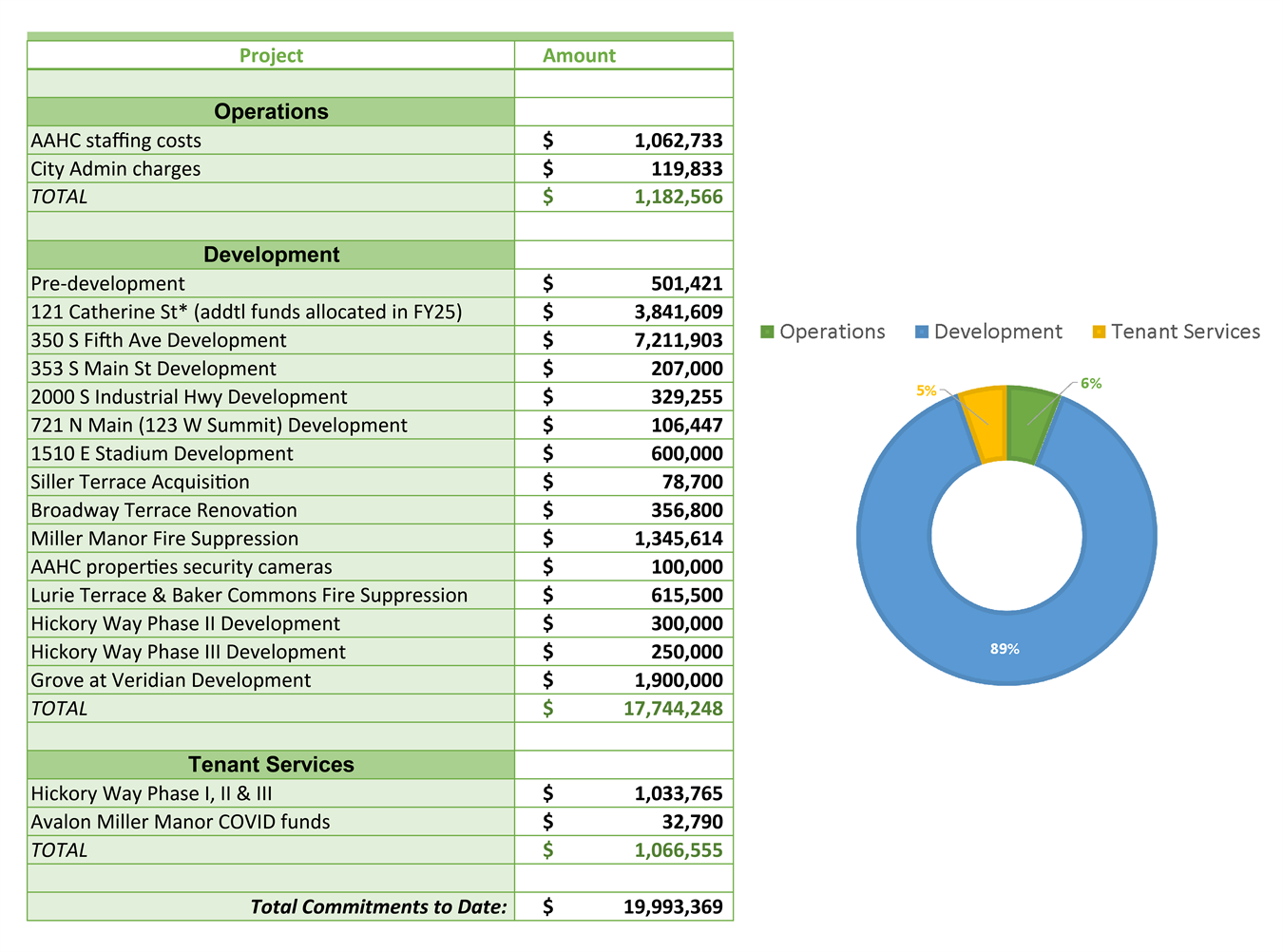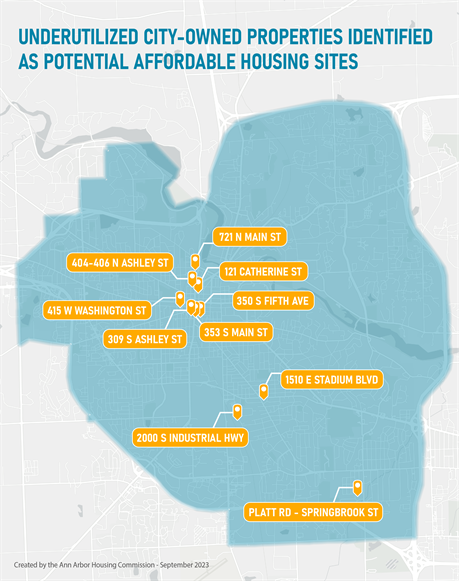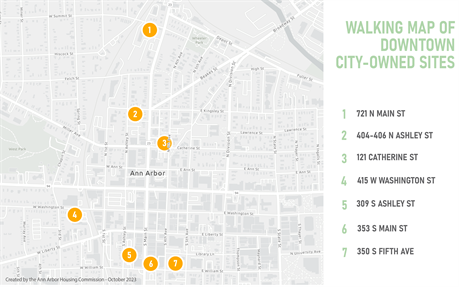2020 Affordable Housing Millage
Ann Arbor City Proposal C
TAX FOR THE CONSTRUCTION, ACQUISITION, AND MAINTENANCE OF AFFORDABLE HOUSING
On the November 2020 election ballot, Ann Arbor residents voted on Proposal C to adopt the charter amendment establishing a millage related to the community's investment in affordable housing. Proposal C was passed with 73% approval from Ann Arbor voters, with every precinct voting in favor.
CHARTER LANGUAGE
SECTION 8.25. In addition to any other amount which the City is authorized to raise by general tax upon real and personal property by this Charter or any other provision of law, the City shall, in 2021 through 2041, annually levy a tax of up to one mill on all taxable real and personal property situated within the City for the purpose of
building, maintaining, and acquiring new affordable housing units which are permanently affordable to low-income households making no income up to 60% of area median income and providing social services, not to exceed 20% of the millage revenues over the entire term of the millage, for the residents of such housing. No money collected pursuant to this millage shall be spent on building, maintaining, or acquiring new units located in the floodplain or floodway.
City Council Affordable Housing Millage guidelines adopted July 27, 2020

FY22-FY24 Millage Commitments

Frequently Asked Questions
What is the Affordable Housing Millage?
The millage generates funds to develop housing for Ann Arbor residents earning less than 60% of the Area Median Income by assessing a 1-mill tax over 20 years. The new units developed through millage funds will meet over 50% of the goal established in a 2015 analysis of affordable housing in Washtenaw County. The passage of Proposal C marks the most significant expansion of affordable housing in the region in over 40 years.
Approximately how many units of Affordable Housing will the Millage support?
It is projected that the funds generated by the millage will support the creation of about 1,500 units of affordable housing to house about 3,700 residents, with up to about a quarter of those units being set aside as permanent supportive housing. Additionally, up to 20% of the millage revenue may be used for supportive services to increase the housing stability of residents.
What is permanent supportive housing?
Long-term rental housing (not transitional) which includes tenant-centered care and support for people facing the complex challenges of homelessness. 95% of those experiencing chronic homelessness in Washtenaw County need permanent supportive housing. Support services are a key element for many low-income or formerly homeless individuals and families to stay housed in affordable, healthier environments. In 2020, 91% of the households living at AAHC properties used at least one supportive service.
Who will own property developed with millage funds?
The millage is not exclusively for the Ann Arbor Housing Commission, but the City created the AAHC to develop affordable housing and the highest priority is to develop City-owned sites. Millage funds can provide gap financing for other affordable housing developments when funding is available. The expectation is that all developers requesting millage funds will commit to long-term and permanent affordability, will screen tenants in for rental properties, and will therefore likely be mission-driven entities, not for-profit entities.
Why is the City looking to fund affordable housing, at least in part, through a millage?
New affordable housing development cannot be constructed without government subsidy due to the high cost of land and construction. Acquisition of existing housing is prohibitively expensive to acquire and renovate without government subsidy. The millage is intended to provide gap financing and leveraged funds with other funding sources, to reduce the cost of development so that it is affordable to households at 60% of Area Median Income or less.
Where are the City-owned sites that the millage is being prioritized for?
The following sites are those included in a financial feasibility analysis of under-utilized City-owned properties:

The following sites are located in downtown Ann Arbor:

Learn more about each of the City-owned sites here.
